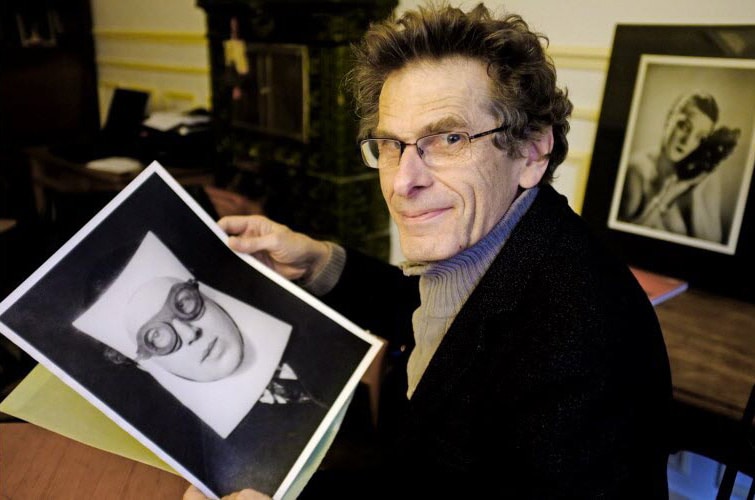Pierre-Yves Butzbach, the little Belfortain who dreamed of being a filmmaker while attending the film club where his otorhino father took him, certainly did not expect to one day plunge neck-deep into such a creative ferment and become the guardian of the treasure of one of the greatest artists of the 20th century.
“After my studies, I created my audiovisual production company in Paris when a friend called me to ask if I would be interested in carrying out photographic reproduction work. This is how I ended up with 6,000 vintage Man Ray prints. A sledgehammer. »

Although Man Ray died in 1976 at the age of 86, Juliet, his last muse, whom he married in 1946 in Los Angeles, was still alive at the end of the 1980s and lived in Paris.
“She was an adorable old lady, who smoked ten packs of cigarettes a day, surrounded by an urgent and often interested court, when her brothers took matters in hand to protect the fund of Man Ray's works.
But they quickly learned, the hard way, that it was best not to send originals when they received a reproduction request. I spent a month at Juliet’s, rue d’Assas, making phototypes. We all know Man Ray's greatest images like ''Black and White'', ''The Violin of Ingres'' or ''The Tears'', but when you have the whole series in front of you, you can seeing the whole creative process, how from an idea, a drawing, it went through photography to arrive at a painting or an object, it's absolutely fabulous. Man Ray was a man who knew exactly what he wanted. We see this through its solarizations, the effect of which is particularly difficult to control.
He was a titanic worker, he led an abundant artistic creation among which photography was only one element, even if he was one of the first to use it as an art in its own right. Moreover, he himself has always claimed to be a painter. It was by chance that he came to photography, to make a living from it, introduced to the technique by Stieglitz. This allowed him to make reproductions of the paintings of his Dadaist friends and often, when he had a plate left, he created a portrait of the artist.
This is how we have photos of a young Picasso. » This collaboration with the Man Ray trust leads to the co-production of a multimedia CD devoted to the artist's work, then to the creation of the first online digital photo library, with a search engine, dedicated to a unique and intended to manage reproduction rights. It is on this basis that Pierre-Yves Butzbach pursues a real quest for Man Ray originals, by contacting collectors. Today, the reproduction collection exceeds 10,000 negatives.
“This is how I met Lucien Treillard, Man Ray’s last private secretary. He was very suspicious at first because he completely rejected the commercial exploitation of the work of the man who was his friend more than his employer. He himself kept tons of marvels and could never even bring himself to throw away the negatives of commercial portraits that Man Ray made a living from in his early days. Rather than destroying them, as he had asked, he gave them to Beaubourg.
Entire boxes, of which only 15,000 negatives have been digitized so far..." Little by little, a bond develops between the two men around the veneration of the master. “I think he considered me a bit like his spiritual son. So one day he arrived at my house with 3,000 phototypes made by Man Ray himself and his assistants, as a selection of what he really wanted us to preserve of his work and as he wanted it to be broadcast.
He gave it to me as a gift... but there is nothing that makes me as jubilant today as finding an unknown image. » In addition to Man Ray's digital photo library, Telimage, Pierre-Yves Butzbach's company, also created the Dubuffet Foundation database, as well as Titouan Lamazou's e-commerce site. www.manray-photo.com allows you to have a view of the collection and even to order, among 150 selected images, a reproduction on silver paper from 24x30 to 50x60 format. With the complicity of Lucien Treillard, Man Ray's private secretary
